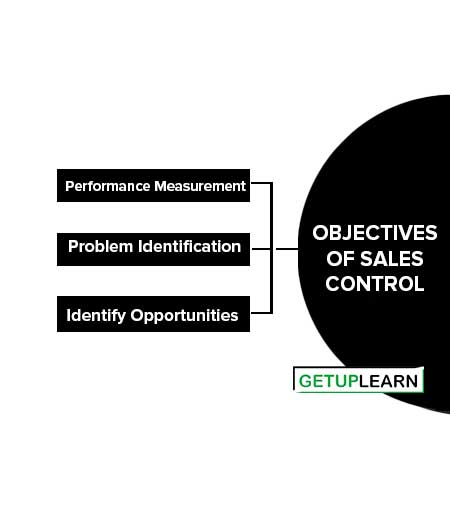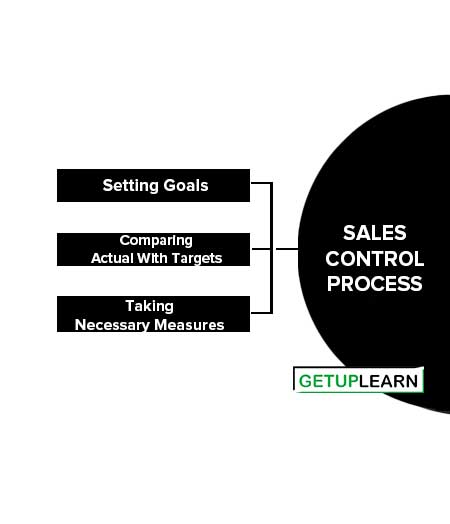Table of Contents
What is Sales Control?
Sales control is a function of management to ensure that operations are being carried out as per the plan to achieve the objectives. Sales coordination is essential to ensure the proper conduct of sales operations by different functionaries in the field. The Sales manager has to produce tangible results and for this to happen he has to have a clear view of his job specification and responsibility.
His position is unique in the sense that he represents the company in the market that treats him as the company. Sales control is a tool for ensuring that the marketing activities of a company are directed toward the marketing objectives.
Objectives of Sales Control
The sales control function ensures that the company’s sales efforts are in tune with its sales plan by taking necessary measures in case of deviations The objectives of sales control are as follows:

Performance Measurement
The first step in effective sales control is measuring the performance of the sales force working in the organization. The objective of evaluation of various sales efforts is critical in ensuring that the company’s growth is progressing as planned.
It helps the company to identify the difference between actual and standard performance and enables sales managers to take corrective action before irrevocable damage takes place.
During these days, managers have started giving more emphasis on performance ratios than the traditional time–to–time increase in sales, to measure sales performance. The ratios used to measure sales team performance include the Sales/Quota ratio, Sales/Budget ratio, etc.
Problem Identification
Sales control helps managers to identify problems in sales before they become liabilities to the firm. In many businesses, sales problems are difficult to fix because they associate with sales effectiveness, and improving sales effectiveness requires ensuring the right mix of skills, supervision, strategy, and systems.
The inability of sales personnel to bring in adequate business, inaccurate sales forecasts, difficulty in increasing profit margins, and the inability of the sales management to capitalize on revenues from existing customers.
Constant feedback can help identify problems at the budding stage itself. Continuous feedback from field sales personnel allows sales managers to identify the problems, both with the system as well those pertaining to the resources involved in the selling process.
Identify Opportunities
Identifying sales opportunities before the competitors do and thus helping the firm gain a competitive advantage is another objective of sales control.
This objective comprises the most dynamic activity of sales efforts and involves a thorough and careful analysis of the market and the competitors. The sales control system helps a manager to diagnose problems in their initial stages and take necessary actions.
Sales Control Process
The sales control process essentially involves the following steps:

Setting Goals
Sales managers direct the sales force by setting goals and framing objectives. They design the course of action by which the sales force can achieve these objectives and they measure the sales force’s performance against the pre-determined goals. Sales planning guides the sales force in their performance and gives them direction along with the work.
It sets targets in the form of sales quotas. Therefore, it forms a critical component of the sales control function. For a sales strategy to be successful there should be careful and efficient sales planning. It provides the necessary framework for all sales activities
The strengths and weaknesses of the sales team and individual salespersons have to be taken into consideration when sales planning is done so that training requirements can be suggested to improve the sales team’s overall performance. This will, in turn, facilitate the fulfillment of the sales objectives.
Exhibit 7.1 explains the sales planning at General Electric. Sales budgets set targets for the costs associated with various sales activities. They help to compare actual spending with the budgeted allowance and enable firms to confine their spending to the limited resources available to them.
Comparing Actual With Targets
This step explains comparing the actual with the set goals. The costs incurred on sales-related activities are compared with the budgeting allowances set during the sales budgeting process. An analysis of the deviations between actual and budgeted costs helps the sales managers take corrective action if actual spending exceeds the budgeted cost significantly.
An analysis of the deviations indicates either an inaccuracy in setting goals or a need to improve performance and efficiency in order to meet the targets. Inaccuracy in setting goals is evident if the sales achieved exceed the targeted sales at a substantially low cost. The need to improve performance and efficiency arises when there is an underachievement of sales accompanied by heavy expenditure.
Taking Necessary Measures
Once the causes for the gaps between the actual and the budgeted values are established, there is a need to take corrective action.
This can be done by modifying the sales plan and budget. If the major cause for the deviation is the underperformance of the sales force, the reasons for underperformance have to be analyzed and remedial measures are taken to improve the sales productivity.
Difficulties in Sales Control
There are certain problems that come in the way of effective sales control. External factors (which are uncontrollable), such as the regulatory, legal, political, and economic environment play an important role in the process of sales control.
This process is further complicated by the inability of sales managers to obtain information about which variable in the marketing mix has contributed to the increase/decrease in sales. Another problem that sales managers encounter pertains to the type of information that can be obtained.
Although there are several information systems that center on their needs by providing vital information pertaining to sales activities, information pertaining to buyers’ purchase plans and purchase intentions cannot be captured.
FAQs About the Sales Control
What are the objectives of sales control?
The following are the objectives of sales control: 1. Performance Measurement 2. Problem Identification 3. Identify Opportunities.
What is the sales control process?
These are the steps of the sales control process:
1. Setting Goals
2. Comparing Actual With Targets
3. Taking Necessary Measures.
